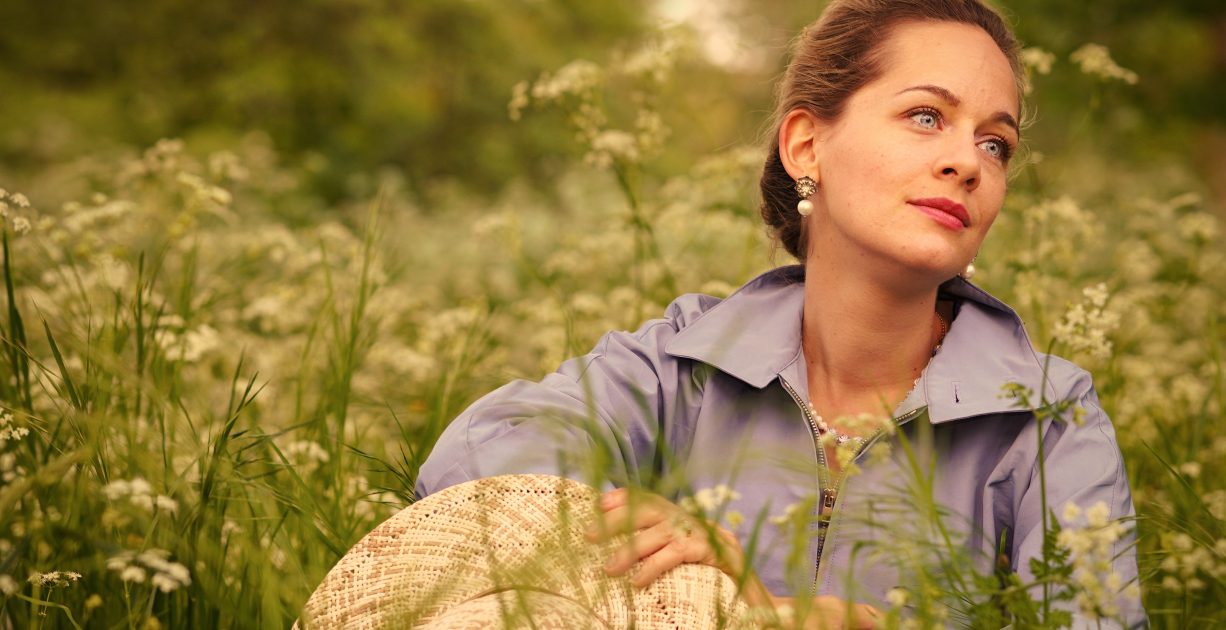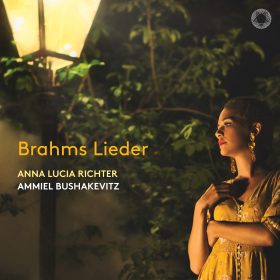Dedicating my first solo recording as a mezzo-soprano to Johannes Brahms’s songs for voice and piano was an easy decision. No other composer of his time seems to have enjoyed and explored the velvety, middle voice register as much as Brahms. Works such as Von ewiger Liebe, Sapphische Ode or Auf dem Kirchhofe will always be favourites of any mezzo-soprano. His handling of what at first appear to be “simple” texts is also particularly exciting for a Lied singer. Brahms penetrates so deeply into the words with his music, turns the poems into his own thoughts to such an extent that the listener can literally taste the mixture of word and sound.
A greater challenge, of course, was to make a selection. All the songs compiled here are connected by the metaphor of “twilight”, Dämmerung: both in relation to daytime and light conditions and in an associative sense, as a preoccupation with emotional moments in life. Dämmerung is based on the ancient idea of vanitas, transience, which preoccupied Brahms throughout his life and which can be found in many literary and musical works in his impressively large library.
Florence May points out that “Von ewiger Liebe” (Of eternal love), which appeared later that year [1864] as Op. 43, No. 1, was among those songs of which he [Brahms] had the highest opinion at the time.” The textual origin of the song was unclear for a long time. Brahms himself mistakenly attributed the poem text to Josef Wenzig. However, more recent research has revealed another source: the volume Gedichte. Neue Sammlung by August Heinrich Hoffmann von Fallersleben. The text is a poetic, free transcription based on Wendish folk songs and was entitled Unzertrennliche Liebe (Unbreakable love) in the collection. Brahms generously altered the original eleven stanzas for his own purposes and comprised them into three.
Wie rafft ich mich auf (How I pulled myself up) also metaphorically interprets the night, but it is much more sombre, with a strong longing for death. The author of this great poem is August Graf von Platen, whose homosexuality was made public by Heinrich Heine and who fled to Italy, where he died unhappily and possibly by suicide at the age of 39. This text seems thoroughly autobiographical, describing nothing other than the temptation of suicide. The whole poem plays between an external action (telling how a person goes to a mill at night and is fascinated by the sky and the depth of the shaft there) and the inner process of throwing oneself off the mill. The latter is never expressed, but becomes increasingly clear.
A particularly emotional song is Auf dem Kirchhofe (At the cemetery). Detlef von Liliencron’s poem uses images of nature as metaphors for time and emotion: ice – winter – death, dew – spring – new beginnings, but also transience. The song plays with archaic patterns, recitative-like moments and a rhapsodic form. A special emotionality is achieved by the chorale ending with melodic parts from Bach’s “Wenn ich einmal soll scheiden (When one day I must depart from here)”, which on the one hand stands in great contrast to the rest of the piece, but on the other hand fits perfectly into the play with two time levels. The first level is that of historical time, to which the archaisms allude. The reference to the text is also clear here: the weathered names on the graves refer to the past time, which are connected with the musical forms of the past. The second level is the interruption of the continuous linear progression of time, to which the rhapsodic form lends itself so well.
Brahms develops a completely different tonal language in his Volkslieder (Folk Songs). Here he repeatedly employs Anton Wilhelm Zuccamaglio’s collection of folk songs. In this book, the “folk song researcher” had “edited” alleged folk songs, but a not inconsiderable part of them were actually his own inventions. Sandmännchen (Little Sand Man), for example, which Brahms dedicated to the children of Clara and Robert Schumann, is not a Lower-Rhine folk song as he assumed, but the melody is based on an old Catholic Christmas carol, while the rest came from Zuccamaglio’s imagination. The situation is similar with the folk song Dort in den Weiden (There in the Willows), whose original title was Das rheinische Mädchen (The Rhenish Girl) and which Brahms had delivered in a pompous version to his lover at that time, Hermine Spies, with the message “Salute to Herma! It wishes to be sung and lived cheerfully and earnestly!”
I am very grateful to Ammiel Bushakevitz, as well as the entire Pentatone team and the Liszt House Raiding, that this heartfelt project could be realized and hope you will be infected by our enthusiasm for these wonderful songs.
– Anna Lucia Richter

September 06, 2022

